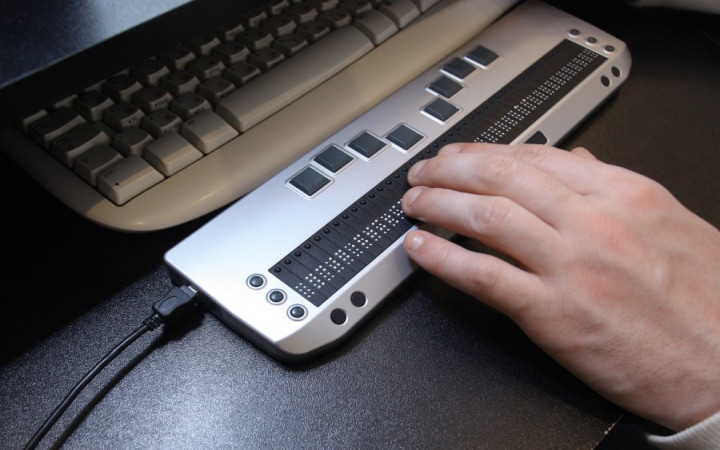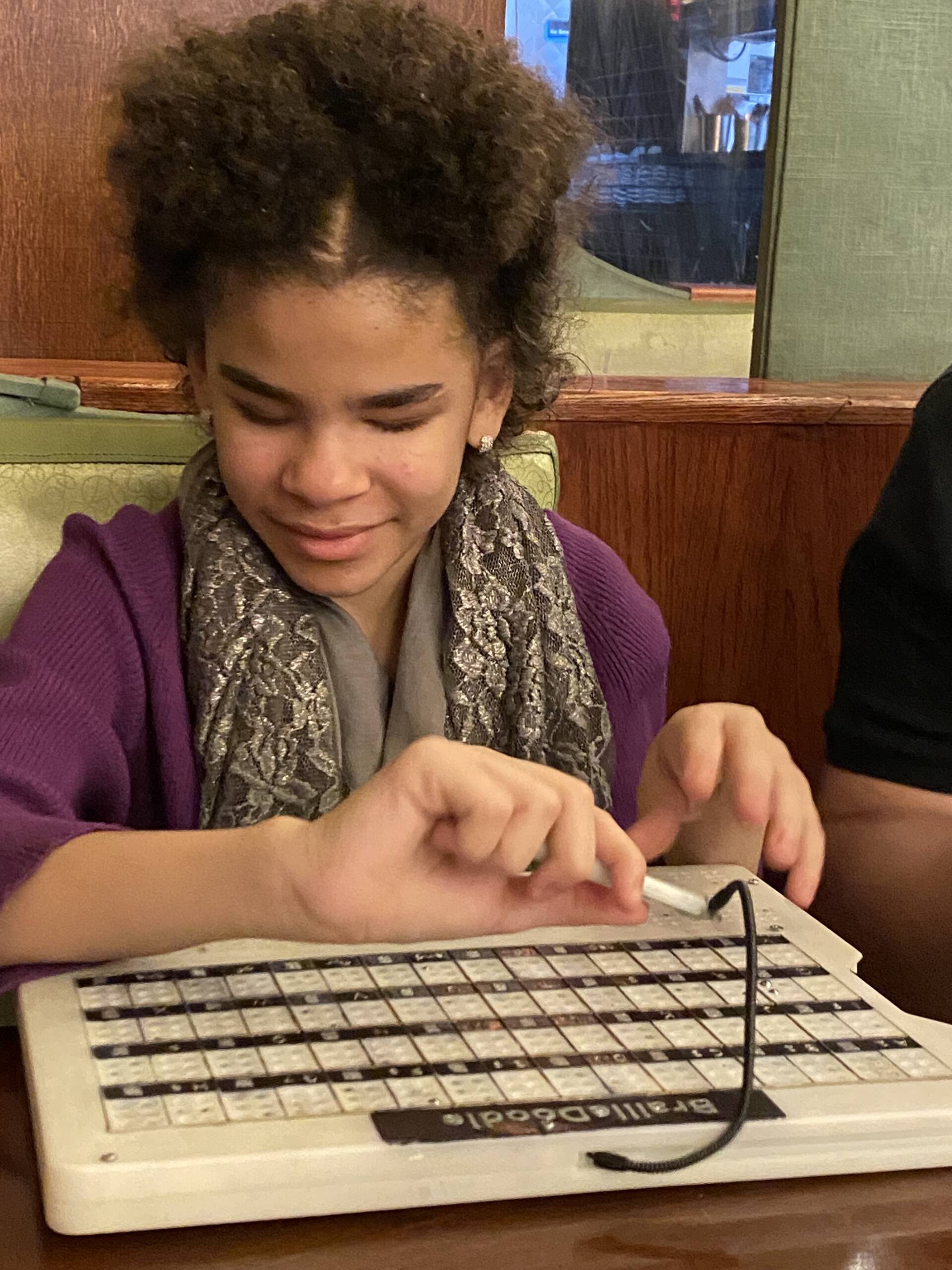AI-Powered Visual Aids: Transforming Support for the Blind
AI-Powered Visual Aids: Transforming Support for the Blind
Blog Article
Empowering Self-reliance With Assistive Technology for the Blind
The assimilation of assistive technology into the lives of people with aesthetic impairments represents a considerable improvement in promoting freedom and self-sufficiency. From cutting-edge display viewers to advanced clever walking canes, these tools not only boost day-to-day navigating and communication yet additionally encourage customers to involve meaningfully in various aspects of life. As we check out the myriad benefits and real-world applications of these modern technologies, it becomes vital to examine the underlying factors that contribute to their effectiveness and the capacity for future growths in this vital area.
Overview of Assistive Modern Technology

The growth of assistive modern technology is grounded in concepts of inclusivity and empowerment. Advancements in software application, hardware, and sensory enhancements supply individuals with choices customized to their particular requirements. From screen viewers that transform text to speech, to responsive devices that convey info with touch, these tools change the means individuals engage with their surroundings.
Along with sensible applications, assistive technology promotes greater social inclusion and involvement in numerous industries, consisting of education and employment (Assistive technology for the blind). As r & d remain to advance, the possibility for assistive innovation to better boost the lives of visually impaired individuals stays appealing, paving the means for a much more fair society where everybody can thrive
Sorts Of Assistive Devices
A selection of assistive gadgets have arised to sustain people with visual problems, each created to fulfill specific demands and boost everyday performance. These tools vary from low-tech remedies to sophisticated developments, offering varied choices for users.
Low-tech tools include magnifiers and large-print materials that aid in analysis and writing. Braille devices, such as Braille slates and stylus pens, enable tactile reading and communication. Positioning and flexibility help, like white canes, aid individuals browse their setting securely.
On the higher end of the range, digital zoom systems and display readers supply significant assistance. Digital magnifiers allow users to expand message and photos on displays, while display readers transform electronic material right into synthesized speech, facilitating accessibility to details on mobile phones and computers.
Smartphone applications likewise play a vital role, supplying functions like message acknowledgment and navigation aid. Wearable innovation, such as clever glasses furnished with enhanced truth, is emerging as an appealing device to enhance situational understanding.
Advantages of Assistive Innovation
The integration of assistive innovation substantially enhances the lifestyle for individuals with visual disabilities. These innovations encourage customers by promoting freedom, enabling them to browse their atmospheres better and perform day-to-day jobs with higher simplicity. Screen visitors and magnification software enable individuals to accessibility digital information, promoting specialist and instructional possibilities that may have formerly been out of reach.
Additionally, assistive devices such as clever canes and GPS applications give real-time navigating aid, boosting flexibility and security. This enhanced autonomy not only enhances self-worth yet also motivates social involvement, permitting individuals to participate even more completely in their areas.
Assistive technology additionally facilitates communication, aiding individuals connect with others through voice recognition and text-to-speech applications. This ability is vital for maintaining connections and accessing important details.
Furthermore, the customization alternatives readily available with several assistive modern technologies guarantee that customers can tailor tools to their details needs, further improving use and efficiency. Generally, the advantages of assistive technology for individuals with visual impairments are profound, advertising a much more inclusive culture where every person can seek their goals and desires.
Situation Research Studies and Success Stories
Highlighting the transformative impact of assistive modern technology, countless situation research studies highlight just how people with aesthetic disabilities have effectively incorporated these tools right into their lives. One engaging instance involves an university pupil that made use of screen analysis software program to navigate on the internet resources and academic materials successfully. This modern technology not only facilitated her education and learning but also boosted her confidence in taking part in conversations and team tasks.
An additional study features an expert that utilizes a smart device application created for navigation and things acknowledgment. By utilizing this app, he has regained autonomy in both his personal and work environments, permitting him to commute separately and engage with colleagues extra successfully.
In addition, a retiree shared her experience with braille e-readers, which enabled her to access a vast array of literary works and stay gotten in touch with her area via publication clubs.
These success tales underscore the critical duty of assistive innovation in fostering independence, boosting top quality of life, and promoting social integration for people with aesthetic problems (Speech-to-text devices for low vision). By welcoming these ingenious tools, individuals can get rid of obstacles and seize opportunities that add to their individual and specialist fulfillment

Future Patterns in Assistive Modern Technology
Development in assistive technology is poised to redefine the landscape of support for individuals with visual disabilities. Arising fads stress the assimilation of man-made intelligence (AI) and device discovering, which enhance the capability of devices that assist with navigating and info availability. As an example, AI-driven applications are currently capable of analyzing visual information in real-time, enabling individuals to engage with their atmosphere a lot more independently.
Additionally, the development of wearable modern technology is progressing swiftly. Smart glasses furnished with increased truth (AR) can offer audio descriptions of surroundings, changing OCR devices for the blind just how customers engage with public areas. These gadgets not only advertise freedom but likewise foster social addition.
Furthermore, the Web of Points (IoT) is making homes smarter, enabling seamless connection between assistive gadgets and everyday devices. This connection equips users by making it possible for voice-activated controls and automatic actions customized to specific requirements.
Verdict
Finally, assistive innovation plays a pivotal duty in equipping individuals with visual disabilities by improving their self-reliance and involvement with their environments. The varied series of devices and applications readily available not just helps with navigation and communication yet likewise advertises social assimilation and chances for expert and personal growth. As developments proceed in this field, the possibility for boosting the lifestyle for those with visual impairments will expand, cultivating better autonomy and empowerment.

Report this page